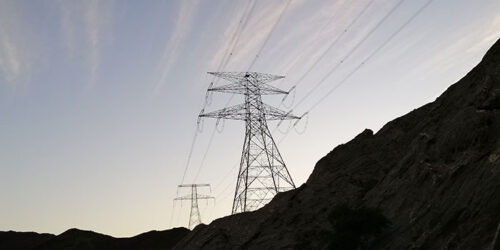Electrical hazards are a major source of concern as working with electricity can be dangerous. The term refers to the unfortunate event where contact with electricity exposes workers to potential harm in terms of injury.

1. Inadequate grounding
A grounding system (or earthing system) is a protection system for electrical installations that connects parts of them with the conductive surface of the earth. Technically, it is the direct electrical connection of a part of an electrical circuit device to an electrode or groups of electrodes buried in the ground. In case of an unforeseen derivation of the electrical current or failure of the insulation, it means, direct or indirect derivations, the earthing system brings this derivation to the ground in order to ensure the safety of people and the functionality of the equipment. When an electrical system is not grounded properly, a hazard exists. Read more about the risks of improper grounding.
2. Arc flash
According to the NFPA 70E (the relevant standard from the National Fire Protection Association), Arc Flash is a “dangerous condition associated with the release of energy caused by an electrical arc.” Arc flash typically occurs during the operation of electrical systems such as opening or closing of breaking devices, which may cause any temporal disturbance in the isolation of the system when the electrical insulation or isolation between live conductors is severed or can no longer withstand the applied voltage. Near the high power electrical equipment, the short-circuit power available is high and consequently so is the energy associated with the electrical arc in case of a fault.

3. Overhead power lines
An overhead power line is an infrastructure used to transmit and distribute electrical energy across large distances. Accidental contact both by a person or an object can cause serious injuries.

4. Inadequate wiring
If the size of the system of wires is not correctly calculated, the risk of an electrical hazard exists. In normal conditions, the circuit breaker has to match the wire size. In the case of inadequate wiring, it can cause overheating, cable degrading (with consequent unexpected properties modification), and even electrical fires that could be derivated into other systems and bigger problems.
5. Inadequate protection sizing
Protections have to be sized in order to ensure the safe operation of all components, not only work devices such as lamps or motors, but also the cables feeding them. Protection has to be sized taking into account the limits of both devices and cables, in terms of long time faults such as overloads that normally cause overheating, or short time as short-circuits that normally cause immediate break downs.
6. Wet and dump locations
According to OSHA, damp or wet locations can be found both outdoors and indoors, and include areas that are unprotected from weather and/or subject to water, liquids or moderate amounts of moisture as this increments the risk of electrocution. Good grounding also can minimize hazards at these sites7
7. Hazardous areas
Installations located in hazardous areas, such as fire or explosion risk areas, must be suitable to operate at this kind of environment and ensure operation at any scenario, any weak point at this kind of installations is critical. Regulations such as ATEX directive must be carefully considered
elec calc
Implementing a culture of safety is of paramount importance. elec calc™ is the software designed for the calculation of low voltage and high voltage electrical installations in real-time, complying with various international standards. It promises an enhanced performance for any kind of electrical projects – from the simplest to the most complex.
